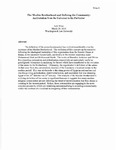The Muslim Brotherhood and Defining the Community: An Evolution from the Universal to the Particular (thesis)

View/
Author
Wren, John Thomas
Subject
Washington and Lee University -- Honors in Religion
Ummah (Islam)
Globalization -- Religious aspects -- Islam
Islam and culture
Jamʻīyat al-Ikhwān al-Muslimīn (Egypt)
Metadata
Show full item recordDescription
Thesis; [FULL-TEXT FREELY AVAILABLE ONLINE] John Thomas Wren, Jr. is a member of the Class of 2010 of Washington and Lee University. The definition of the umma/(community) has evolved considerably over the existence of the Muslim Brotherhood. The evolution of this concept can be traced by following the ideological leadership of this organization from the founder Hasan alBanna, to his successor Sayyid Qutb, and finally to the modern leadership under Muhammad Akef and Mohammed Habib. The works of Benedict Anderson and Olivier Roy regarding nationalism and globalization respectively are particularly useful as paradigmatic viewpoints in analyzing the factors which have contributed to the evolution of the umma in the Brotherhood. Ultimately, the organization's definition of the umma shifted away from the universalistic doctrine of the founder to a localized extent in the modern period. This was attributable to the rising power of Egyptian nationalism and also the growing globalization, deterritorialization, and secularism that was sweeping Egypt in the 20th and into the 21st century. This analysis of the Muslim Brotherhood's evolving definition of the umma is significant because it suggests that many modern religious communities are not following the trend of universalization that Roy claims is occurring in the modern period. Rather, these communities are engaging in the more complex process by which universalizing and nationalizing is occurring concomitantly within the confines of a localized re-imagining of their communities. Jack Wren